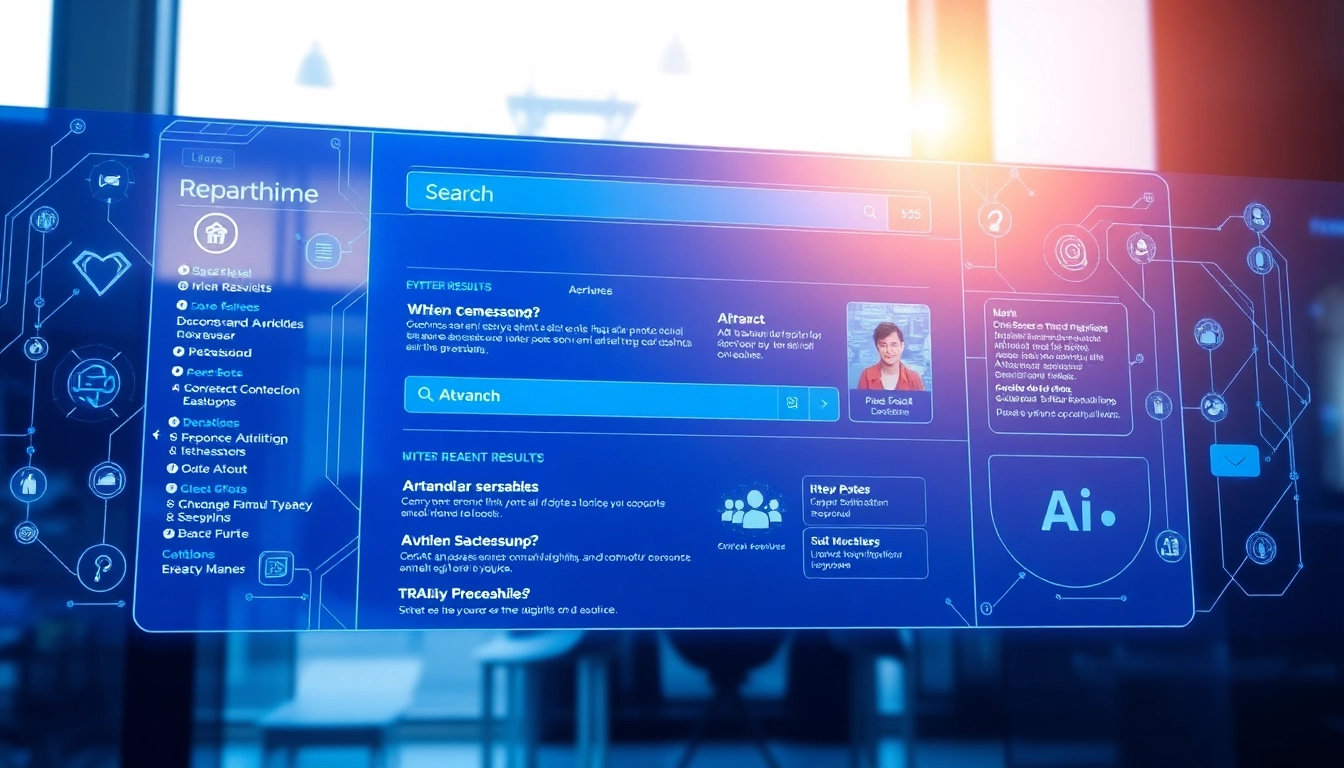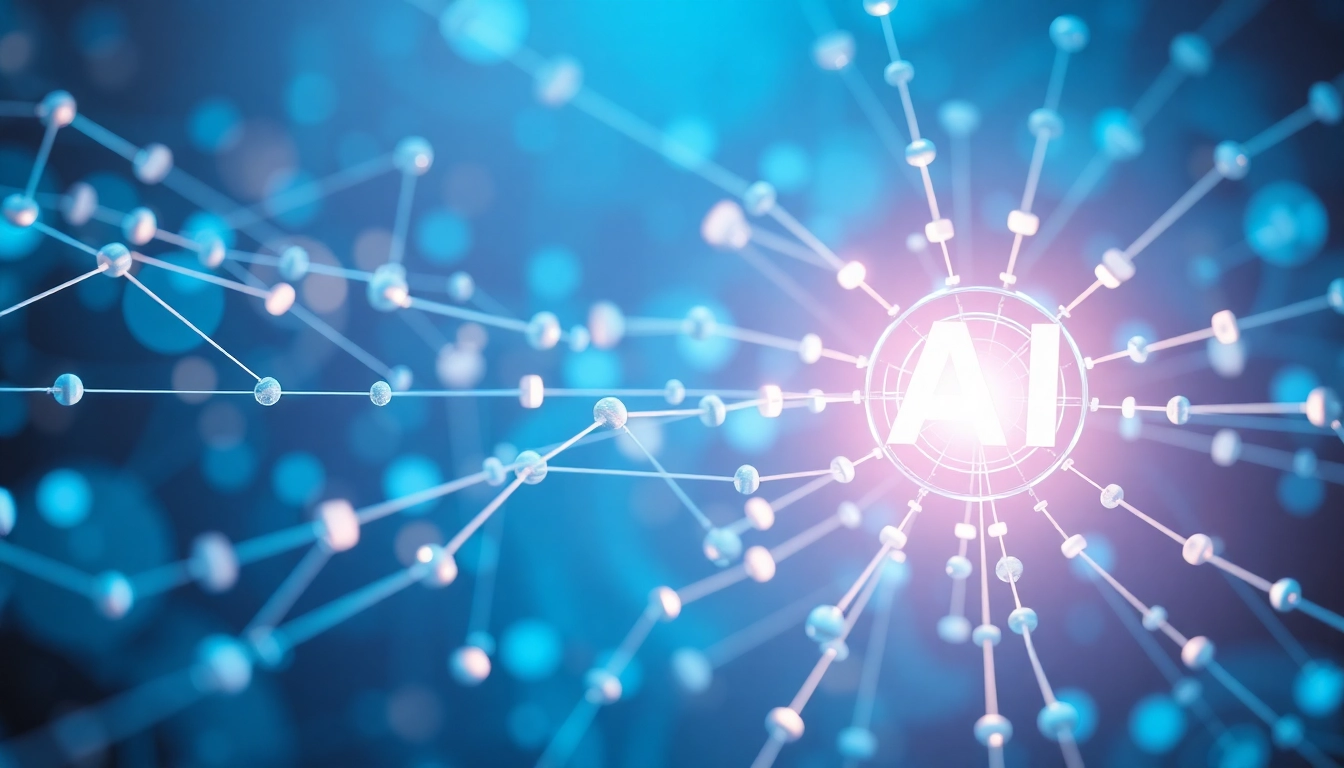Understanding Agentic Human AI
Defining Agentic Human AI
Agentic Human AI represents a paradigm shift within artificial intelligence, where systems are not merely tools that assist humans but are capable of making decisions and executing actions autonomously. This form of AI is designed to work with limited human intervention, adapting to new tasks and environments through machine learning and advanced algorithms. In essence, agentic AI acts as an autonomous agent, effectively bridging the gap between traditional AI applications and human autonomy.
This concept builds on the promise of intelligent systems that can learn from experience, adapt to changing circumstances, and apply reasoning to solve complex problems. The arrival of Agentic Human AI in the workplace signifies a pivotal evolution, emphasizing the integration of human-like understanding within AI systems, designed to enhance productivity and innovation.
Key Characteristics and Functions
Agentic Human AI exhibits several defining characteristics:
- Autonomy: These systems can make decisions independently based on their programming and data inputs.
- Learning Capability: Through machine learning algorithms, agentic AI can improve its performance over time, analyzing outcomes and patterns to enhance future actions.
- Goal-Oriented Behavior: Agentic AI is designed to achieve specific tasks or goals without ongoing human supervision.
- Complex Problem Solving: By relying on sophisticated reasoning and data analysis, these systems can address intricate challenges that require more than simple automation.
These features position agentic AI as an invaluable asset across multiple sectors, tackling tasks ranging from data analysis to customer service, and even complex logistical operations.
Historical Context and Evolution
Agentic Human AI is not an entirely new concept but rather an evolution of existing AI frameworks and theories. To appreciate its significance, we must trace its roots. Initially, AI systems were primarily rule-based, relying on predefined commands to execute tasks. Over time, advancements in machine learning, natural language processing, and neural networks set the stage for the emergence of more interactive and adaptable AI.
The progression towards agentic AI gained momentum in the 2010s, as researchers began emphasizing systems that could not only process data but actively learn from it. Developments in reinforcement learning—where AI models learn to make decisions by receiving feedback from their environment—ushered in a new era of intelligent systems capable of autonomous thought and action.
Improving Efficiency and Productivity
One of the most significant advantages of integrating agentic human AI is its unparalleled ability to enhance efficiency and productivity within organizations. By automating repetitive tasks and streamlining processes, businesses can redirect human resources towards more strategic initiatives. For instance, in the manufacturing sector, agentic AI can oversee supply chain management, optimizing inventory levels and reducing waste, while human employees focus on innovation and customer engagement.
Additionally, agentic AI tools in customer service, such as chatbots, can handle inquiries and resolve issues without human intervention, providing faster responses and enhancing customer satisfaction. This creates a scalable model where businesses can manage growth without proportionately increasing their workforce.
Enhancing Decision-Making Processes
Another crucial benefit of agentic human AI is its ability to augment decision-making processes within organizations. Through advanced data analytics, agentic AI can analyze vast datasets, identifying trends and insights that may elude human analysts. When equipped with these insights, businesses can make more informed strategic decisions quickly.
Moreover, agentic AI can assist in risk assessment and management. By simulating various scenarios and outcomes, organizations can proactively identify potential risks and determine appropriate responses, ultimately creating more resilient operational frameworks.
Fostering Innovative Solutions
Innovation thrives in environments that encourage experimentation and creativity, and agentic human AI can play a pivotal role in fostering this culture. By taking on mundane and routine tasks, these AI systems free up human talent, allowing employees to engage more deeply in problem-solving and creative thinking.
Furthermore, agentic AI can contribute to innovation directly. For instance, in pharmaceutical development, AI systems capable of analyzing complex biological data can help identify new drug candidates. By accelerating research timelines and enhancing accuracy in predictions, agentic AI serves as an invaluable partner in the innovation landscape.
Integrating AI within Existing Systems
Despite the advantages of agentic human AI, organizations face significant challenges in its implementation. Integrating advanced AI systems into existing infrastructures often requires a careful evaluation of current processes and the potential for disruption. The complexity of legacy systems may hinder seamless adoption, demanding a strategic approach to integration.
Organizations must take proactive measures to align new AI technologies with their operational frameworks. This can include setting clear objectives for AI deployment, ensuring interoperability and providing the necessary technical support during the transition phase.
Addressing Ethical Considerations
The advent of autonomous AI raises pressing ethical questions. Organizations must navigate potential biases in AI algorithms that could lead to unfair representations or decisions. Moreover, there are concerns regarding privacy, transparency, and accountability in AI decision-making processes.
To address these challenges, companies must establish robust ethical guidelines that govern AI operations. This may involve stakeholder engagement, developing responsible AI frameworks, and prioritizing transparency in how AI systems function and make decisions.
User Acceptance and Training
The successful integration of agentic human AI also hinges on user acceptance. Employees may feel apprehensive about interacting with AI systems, fearing job displacement or competency challenges. Overcoming this barrier entails investing in comprehensive training and demonstrating the value of AI as an enhancement rather than a replacement.
Organizations should involve employees early in the process, providing education about how AI can augment their roles and contributing to a culture of collaboration between humans and machines.
Case Studies in Various Industries
Agentic human AI has found applications across numerous industries, showcasing its versatility and impact:
- Healthcare: AI systems are transforming patient care by enabling predictive analytics for disease diagnosis and treatment recommendations that are guided by real-time patient data.
- Finance: Agentic AI is used in fraud detection, continuously analyzing transactions to identify anomalous patterns indicative of fraudulent activity, vastly improving security measures.
- Retail: Personalization algorithms in retail leverage customer data to recommend products and optimize inventory based on consumer behavior predictions, thus enhancing customer experience and increasing sales.
Future Predictions and Trends
As the landscape of agentic human AI continues to evolve, several trends are emerging. First, the democratization of AI tools will make advanced capabilities accessible to smaller businesses, allowing them to harness AI innovations without the need for extensive resources. Additionally, advances in ethical AI practices will become critical as organizations strive to ensure fairness and transparency in their AI systems.
The growing integration of AI in various sectors indicates a future where collaboration between humans and machines is fundamental to operational success. We can expect AI to become a standard aspect of business strategy rather than an added component.
Success Stories from Early Adopters
Many organizations have already experienced substantial benefits from adopting agentic human AI. For example, a leading automotive manufacturer implemented AI-driven robotics in its assembly lines, resulting in increased efficiency, a significant reduction in production costs, and improved product quality. Similarly, a multinational bank utilized AI systems to streamline its fraud detection processes, achieving faster detection rates and reduced losses.
These success stories highlight not only the transformative potential of agentic human AI but also provide valuable insights into best practices for companies looking to adopt similar technologies.
Steps to Integrate Agentic Human AI
To successfully implement agentic human AI, organizations should consider the following steps:
- Assessment: Conduct a comprehensive evaluation of business processes to identify areas where AI can add value.
- Setting Objectives: Define clear, measurable goals for AI integration to guide strategic planning.
- Choosing the Right Tools: Select AI tools that align with organizational needs and infrastructure capabilities.
- Pilot Programs: Start with pilot projects to test the effectiveness and refine processes before full deployment.
- Feedback Loop: Integrate a feedback system to continuously assess AI performance and make necessary adjustments.
Training and Support Mechanisms
A critical component of effective AI implementation is a robust training and support system for employees. Training programs should focus on the functionality of AI tools, highlighting how they enhance existing processes and workflows. Continuous support channels must also be established to address any challenges employees face during the transition.
Organizations should consider offering ongoing learning opportunities, workshops, and resources to help staff become proficient in using and interacting with AI technologies.
Measuring Impact and Performance
Finally, organizations need to establish metrics for measuring the impact of agentic human AI on their operations. Key performance indicators (KPIs) may include productivity rates, cost savings, customer satisfaction levels, and employee engagement scores. Regular evaluation against these metrics will provide insights into the success of the AI integration and inform future improvements.
By maintaining a focus on measurable outcomes, organizations can reinforce their commitment to continuous improvement and ensure they fully leverage the capabilities of agentic human AI.










Leave a Reply